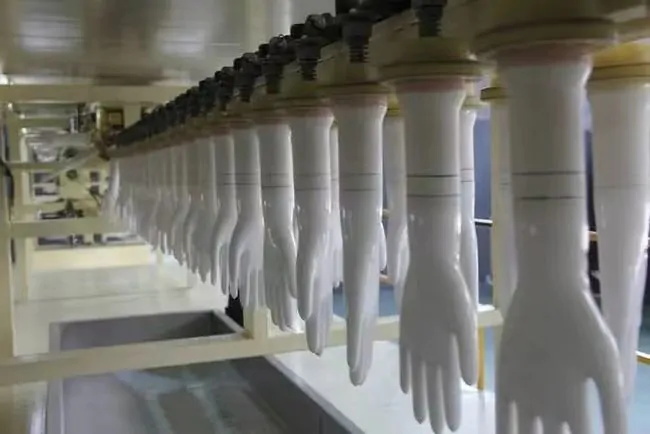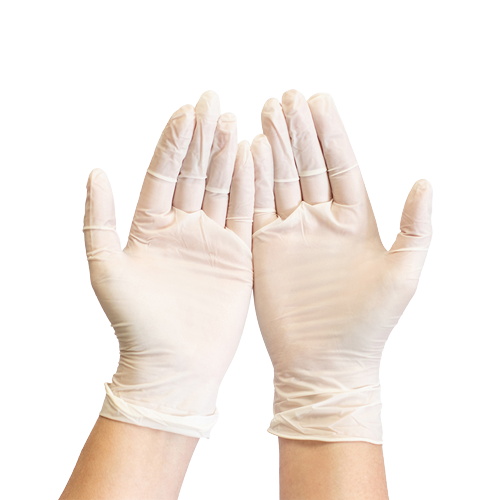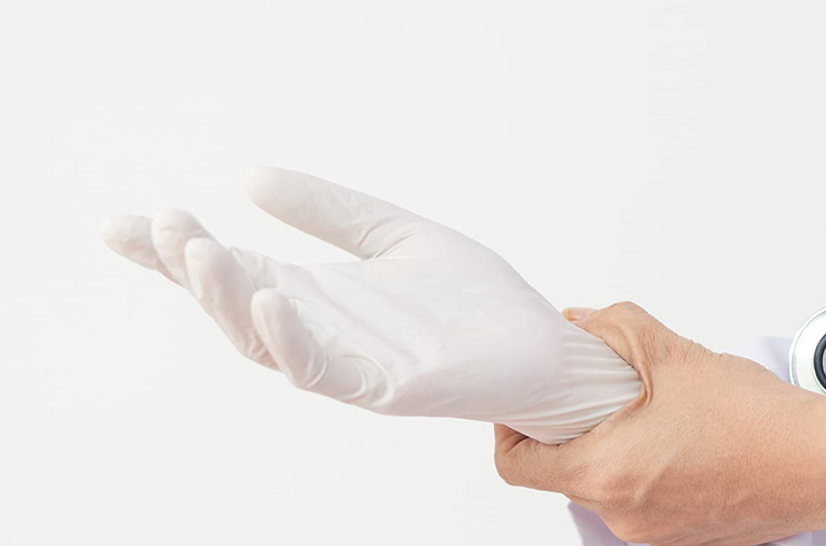Protect your hands with the comfort of latex gloves
Choosing high-quality latex gloves can ensure adequate protection for your hands while ensuring comfort and flexibility. With latex gloves, you can handle your tasks with confidence and peace of mind.
YOUR TRUSTFUL GLOVES SUPPLIER
JINYE is a leading manufacturer and supplier of high-quality gloves. With years of experience in the industry, we have established ourselves as a trusted partner for customers around the world. As a result, our gloves are widely recognized for their superior performance and have become the go-to choice for businesses across various industries.
Disposable gloves
Latex gloves are gloves made from natural latex, which is a milky fluid derived from the rubber tree. They are widely used in the healthcare industry, food industry, and other industries that require protection against contamination or infection. Latex gloves have a high level of elasticity, fit snugly on the hand, and provide excellent tactile sensitivity.
What We Offer
ADVANTAGES OF LATEX GLOVES
gloves manufacturing
Latex gloves are made through a complex manufacturing process that involves several steps.
First, natural rubber latex is harvested from rubber trees, usually in tropical regions. The harvested latex is then processed to remove impurities and create a homogeneous liquid.
Next, the liquid latex is mixed with various chemicals and colorants to achieve the desired properties and appearance of the gloves. The mixture is then poured onto a form or dipped into a ceramic or aluminum mold, which is then heated and dried to form the final shape of the gloves. After the gloves are formed, they are washed, leached, and cured to remove any residual chemicals and improve their strength and elasticity.
Finally, the gloves are packaged and sterilized before being shipped to customers.
MEDICAL GLOVES
Medical gloves are essential protective equipment used in the healthcare industry to prevent the spread of infections and diseases.The two main types of medical gloves are exam gloves and surgical gloves.
Exam gloves are commonly used in medical settings for routine exams, such as physical exams, as well as for basic procedures like drawing blood. They are made from a variety of materials, including latex, nitrile, and vinyl, and come in different sizes and thicknesses.
Surgical gloves, on the other hand, are designed specifically for use in surgical procedures. They are made from higher-quality materials, such as natural rubber latex or synthetic materials like neoprene or polyisoprene, to provide better protection against infection and other contaminants. They are also thicker than exam gloves, to provide extra protection during surgical procedures.
Overall, both exam gloves and surgical gloves play important roles in medical settings, but it is important to choose the appropriate type of glove for each specific task to ensure the best possible protection for both patients and healthcare workers.”
gloves application
Latex gloves are widely used in a variety of industries due to their versatility and reliability. Here are three common uses for latex gloves
Latex gloves are the go-to choice for medical and healthcare professionals because they provide excellent barrier protection against viruses, bacteria, and other pathogens. They are commonly used for routine patient examinations, surgical procedures, and laboratory work.
Latex gloves are also used in the food industry to maintain hygiene and prevent cross-contamination. They are particularly useful in food preparation and processing, where it's important to avoid direct contact with food products.
Latex gloves are also popular in the cleaning and janitorial industry as they protect against cleaning chemicals and other hazardous substances. They provide a barrier of protection for workers who clean restrooms, handle garbage, and perform other cleaning tasks.
choice of gloves
latex gloves vs vinyl Gloves
Latex gloves and vinyl gloves are both popular choices for hand protection in various industries. Here are some key differences between the two:
Material: Latex gloves are made from natural rubber latex, while vinyl gloves are made from synthetic PVC material. Latex gloves are more elastic and flexible, providing a better fit and more dexterity, while vinyl gloves are less elastic and less form-fitting.
Strength and durability: Latex gloves are stronger and more durable than vinyl gloves, making them a better choice for tasks that require higher levels of protection and durability.
Allergies: Latex gloves can cause allergic reactions in some people, while vinyl gloves are generally hypoallergenic and a better choice for those with latex allergies.
Overall, the choice between latex gloves and vinyl gloves depends on the specific needs of the task at hand, as well as any allergy concerns.
The powder in latex gloves is typically cornstarch or some other form of food-grade starch. The powder is used to make the gloves easier to put on and take off, as it absorbs moisture and reduces friction between the glove and the skin. However, the use of powder in latex gloves has been controversial due to the potential for the powder to cause allergic reactions or respiratory issues in some individuals. As a result, many latex gloves are now powder-free.
Latex gloves can be good for your skin, as they provide a barrier between your skin and potentially harmful substances. However, some people may have an allergy to latex, which can cause skin irritation, redness, and itching. In addition, wearing latex gloves for extended periods of time can lead to sweating and moisture buildup, which can potentially cause skin irritation. If you have sensitive skin or a known allergy to latex, it's best to avoid using latex gloves and opt for an alternative option like nitrile or vinyl gloves.
Powdered latex gloves are not recommended for use with food. The powder used in these gloves may contaminate food or irritate those with allergies or sensitivities. It is recommended to use powder-free latex gloves or non-latex gloves for food handling. Additionally, in many countries, powdered gloves have been banned due to health concerns, including contamination and respiratory problems caused by inhalation of the powder.
Medical grade gloves refer to disposable gloves that are specifically designed and tested for use in medical and healthcare environments. These gloves are made of various materials, including latex, nitrile, and vinyl, and are tested to ensure they meet specific standards for barrier protection, durability, and freedom from defects. Medical grade gloves are used by healthcare professionals to protect themselves and their patients from the spread of infectious diseases and other harmful substances. These gloves must meet rigorous standards set by regulatory agencies, such as the Food and Drug Administration (FDA) in the United States, to ensure their safety and effectiveness.agencies, such as the Food and Drug Administration (FDA)
Latex examination gloves are commonly used in the healthcare industry by doctors, nurses, and other healthcare workers to protect themselves and their patients from the spread of infectious diseases and bacteria. They are designed to be worn during medical procedures, exams, and tests, such as blood draws, surgery, and dental work. Latex examination gloves provide a barrier between the skin and any bodily fluids, and can help prevent the transmission of pathogens. They are also used in laboratory settings, as well as in food service and processing industries, to maintain sanitary conditions and prevent contamination.
Latex gloves are made of natural rubber latex while nitrile gloves are made of synthetic rubber. The main difference between the two is that latex gloves are more elastic and comfortable to wear, but may cause allergies in some people. Nitrile gloves, on the other hand, are more durable and resistant to punctures and chemicals, making them suitable for use in industries such as healthcare, food service, and automotive. Additionally, nitrile gloves are typically latex-free, which reduces the risk of allergic reactions.











